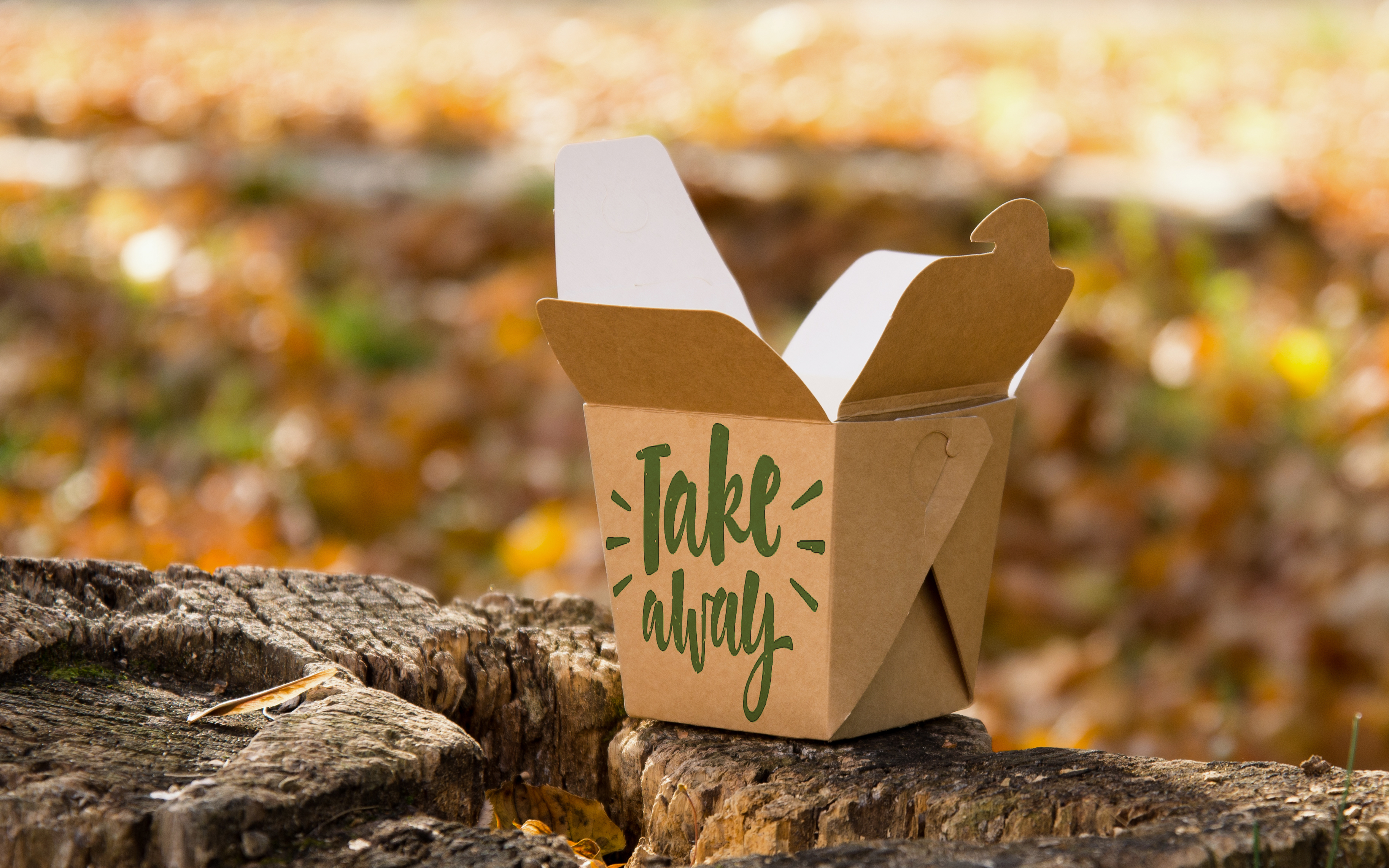Interview with Wilke Föllscher
The Transition from Plastic to Paper Packaging – How Paper Converters Can Eliminate the Barriers to Change with Water-Based Dispersions
The packaging industry has become increasingly conscious of its environmental impact due to the growing consumer demand for sustainable solutions. Brand owners are committing to a more sustainable packaging future by setting recycling targets and reducing plastic use. This has led to the exploration of various solutions, such as paper-based packaging, to achieve these sustainability goals. In this Q&A, Wilke Föllscher, Business Development Manager Paper Mills EMEA, delves into the industry's current state of transition, the regulations and other challenges brands and converters need to meet, and the innovative solutions like ACTGreen® Barrier Coatings, which are empowering them to make a positive change towards a greener future.

Environmental consciousness in society is constantly increasing. What is the current state of the packaging industry regarding its environmental impact and what opinions are there towards improving sustainability?
Packaging is not only necessary to protect and transport goods, but also an important environmental issue. The increasing use of packaging combined with low reuse and recycling rates is hindering the development of a low-carbon circular economy. Packaging is “non-recyclable” if it cannot be collected separately or poses challenges to modern sorting and recycling processes.
In response to the increasing demand for sustainable solutions, most brand owners have already begun to commit to a more sustainable packaging future. Almost all of these brands have set themselves targets to increase recycling and reduce their use of plastics in packaging. This can involve a complete switch from plastic to paper-based packaging, or the choice of a more environmentally friendly paper coating, as in the case of barrier papers.
For packaging that must provide a barrier effect, solutions such as conventional PE, silicone or fluorochemical barriers are still widely used in the industry. However, due to their poor recyclability – and in some cases potential harmfulness -, these materials represent a major drawback in terms of sustainability and are subject to change.
Much of the industry sees paper-based packaging as a viable solution to achieve their required recycling targets. We can see that this is an accurate viewpoint, as in the EU in 2021, 40% of plastic packaging was recycled, whereas 80% of packaging made from paper and board was due to the current public understanding and infrastructures in place to enable paper and board recycling. However, there are still elements that are creating challenges when brands look to make this materials switch and benefit from this dramatic recycling improvement. Paper and packaging converters are therefore now looking for ways to support their customers and solve these challenges.
Are regulations also playing a role in creating this transition from plastic to paper packaging?
Yes, absolutely. Packaging converters face increasing pressure to comply with numerous regulations, such as the EU Single-Use Plastics Directive (SUPD), which is a commission guideline on single-use plastic products. The SUPD aims to prevent and reduce the impact of certain plastic products on the environment. Significantly, the directive includes a prohibition on polystyrene packaging and certain plastic items, along with restrictions on the use of plastic lining in paper-based packaging.
In addition to this, Extended Producer Responsibility (EPR) has already been adopted by numerous countries. It mandates packaging converters to take responsibility for the environmental impact of the packaging they supply. EPR entails fees for the collection and disposal of the packaging once it becomes waste.
Converters also must consider the implications of the Packaging and Packaging Waste Regulation (PPWR). The regulation sets specific recycling targets and mandates quotas for utilizing recycled materials in packaging. Consequently, materials or multilayer structures failing to meet these targets may face prohibition.
These are just a few examples of how legislators are working on laws and regulations designed to make packaging more sustainable and often the answer for brands is to move to paper and board-based solutions.
So what are the challenges faced by paper and packaging converters and brand owners in adopting more sustainable, paper and board-based packaging solutions?
Switching from existing packaging products to more sustainable options can have its difficulties. Firstly, brands may make that initial step and choose a paper-based packaging design and, once on the shelf, consumers will perceive this fibre-based box or pouch as a more sustainable choice. But if the barrier coating within the packaging remains a plastic PE laminate, for example, then the recyclability of that packaging still has limitations.
For converters, the exact requirements for the function of specific packaging are often unknown, leading to over-specification which can make it difficult to find a more sustainable solution. When making the switch, converters also need to consider that paper behaves differently to plastic. Its fundamentally different properties can be problematic when using the same equipment. A higher volume of material might be used to compensate for losses in tensile strength and other properties.
There may additionally be adjustments needed to be made on filling and packaging lines which could cause slower speeds when converting to paper-based solutions. Like in most industries, switching to more sustainable solutions often requires adjusting equipment. For example, investment in new coating lines that compete with established processes such as PE extrusion lines.
A further challenge lies in the lack of a “one-fits-all” solution. To identify the most suitable coating, converters should look at factors like the packed product, packaging type, shelf life, application process, and other relevant factors. Hence, offering a ‘one-fits-all’ solution for every application becomes a complex task.
What kind of solutions are being introduced to the market to solve these challenges?
The market has been focused on finding and developing sustainable alternatives in order to opt for paper packaging or barrier-coated paper that can be recycled and truly aid circular economy. As a result, there has been a significant increase in interest in water-based dispersion coatings on offer in recent years. In particular, the highly regulated food packaging industry is transitioning to these coatings, but this industry requires in-depth knowledge of the requirements for different food types and applications to provide safe packaging for consumers and the environment.
At ACTEGA, we have this expertise and combined with our extensive knowledge of the chemistry behind creating effective, high-quality coatings, we have formulated the ACTGreen® Barrier Coatings range to meet this industry’s, and many others, requirements. With a solution like ACTGreen® Barrier Coatings, paper converters have the chance to offer their customers a true solution to their regulatory and recycling needs by creating sustainable barrier-coated papers that offer the functionality of their existing products. What’s more, ACTEGA’s partnership approach ensures that we will work alongside converters to make sure the product they bring to market lives up to their current quality standards and any adaptations to their production methods are as seamless as possible, making the process of switching to water-based barrier coatings that much easier.
What are some of the key benefits of ACTGreen® Barrier Coatings?
First and foremost, these coatings are a range of advanced water-based barrier coatings and next generation thermoplastic elastomer (TPE) dispersions, offering exceptional regulatory safety. As such, they provide paper and packaging converters with the confidence that they will meet both industry requirements and their customers’ needs. They offer protection against a range of substances, including water, water vapor, oils, and fats.
Another key benefit, of course, is the ACTGreen® Barrier Coatings’ recyclability. Each coating in the range ensures a remarkable recycling rate, with up to 95% of the packaging material being recyclable. This attribute is becoming increasingly important, aligning with the industry’s transition towards paper-based solutions.
As mentioned, the ACTEGA range can be used for a variety of different printing and coating applications. ACTGreen® stands out for the range’s extreme versatility, compatible with size coating, blade and rod coating, curtain coating, smooth roller coating, flexo and rotogravure printing and more. Through a series of possible secondary features, ranging from heat sealability to heat resistance, the ACTGreen® Barrier Coatings provide an effective, economical and truly sustainable solution for paper and packaging converters looking to answer the ever-increasing call for reduced plastic use.

How does ACTEGA support customers in their transition to paper?
ACTGreen® Barrier Coatings also utilise the innovative YUNICO® technology to enable the development of customized coatings for different applications and end uses with unmatched regulatory safety. This technology gives ACTEGA the capability to offer bespoke solutions to each of our customers, making the transition to water-based coatings as seamless as possible for both them and their customers.
ACTEGA not only offers tailored solutions for each customer's needs, but also provides a dedicated barrier team with the expertise to support customers throughout the process. Collaborating closely with customers, ACTEGA develops the best fitting solution, ensuring they align with expectations and requirements for coatings, applications, and substrates’ compatibility. Recommending the right barrier coating solution requires expert information and knowledge and ACTEGA’s highly skilled team offer this expertise whilst also working in close cooperation with our customers to achieve the best results.
How do you see the packaging industry evolving in the future, and what role will sustainable solutions like ACTEGA’s ACTGreen® Barrier Coatings play in this evolution?
We will continue to see more focus put on the sustainability of packaging as it continues to be evaluated on recyclability performance and environmental impact. As the market increasingly prioritizes environmental friendliness, brands must substantiate their sustainability claims. Essentially, packaging can’t just look sustainable it has to truly be sustainable and a key element of achieving this lies in the packaging’s recyclability.
Paper converters are such a crucial link in this value chain – they hold the key to brands and packaging converters being able to meet their sustainability targets by offering barrier-coated paper and board that can be easily recycled. ACTGreen® Barrier Coatings, therefore, will also be vital in enabling widespread adoption of these papers. By helping our customers move away from PE laminated board to water-based coatings that don’t compromise on functionality, ACTEGA can support the transition from plastic to paper, wherever possible. It’s a big challenge, but also a huge opportunity, especially for paper converters who can lead the way in facilitating this shift in market behaviour from the very start of the production process.
Here you can find more detaild information about our ACTGreen® Barrier Coatings.